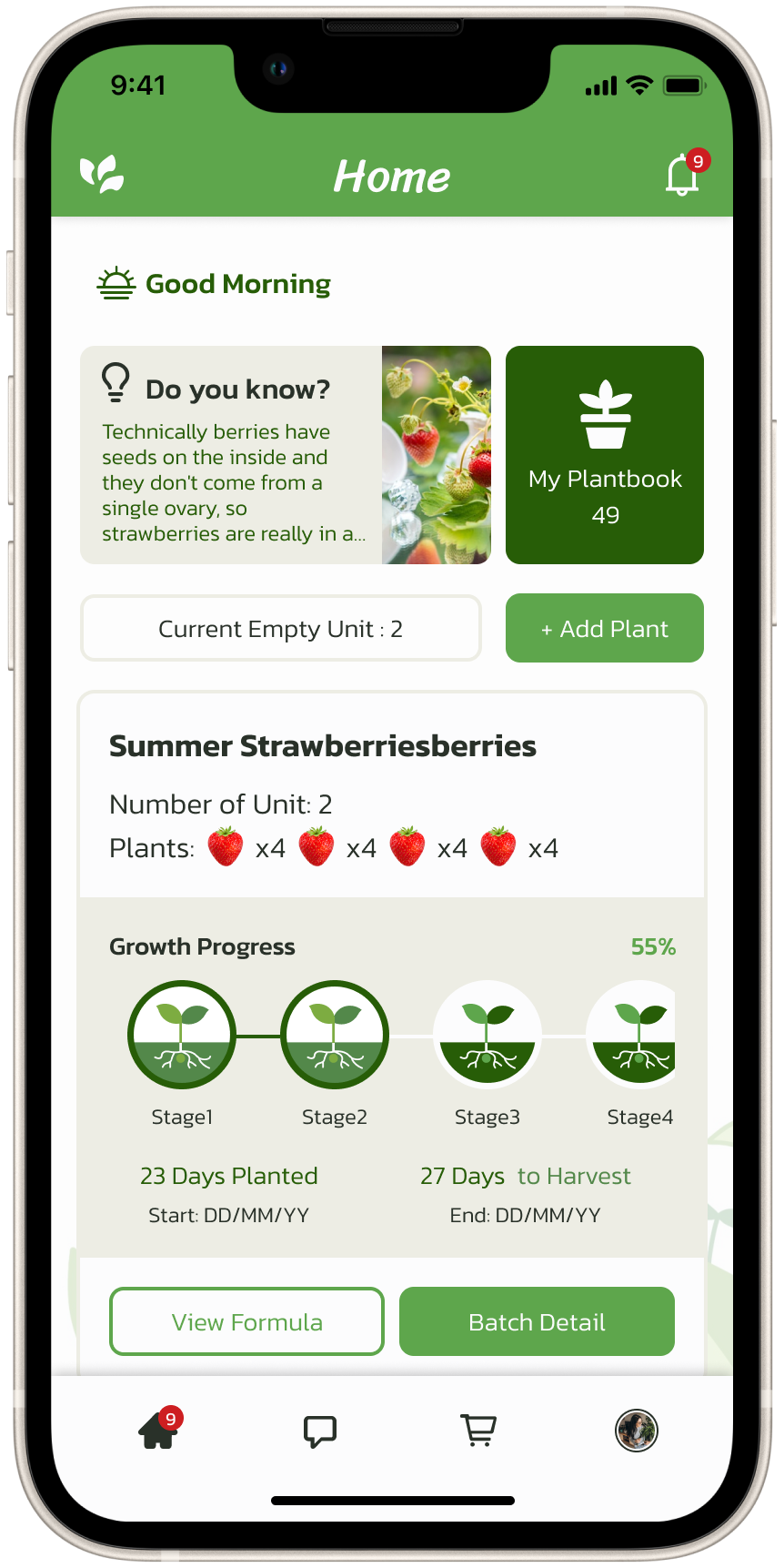Farm Automation Your Way



Smart farm automation operates on a sophisticated cycle of monitoring, feedback, and adjustment to optimize crop growth from seeding to harvest. Here’s a detailed description of the process:
1. Starting with a Formula: The cycle begins with a predefined growth formula for each crop, which sets the baseline parameters for ideal growth conditions. This formula includes the optimal range of temperature, humidity, nutrient concentration, pH levels, light exposure, and irrigation schedules.
2. Implementing the Growth Plan: The system initiates the growth plan by automatically adjusting the farm’s environmental controls to match the requirements of the formula. For instance, in a hydroponic setup, it would mix nutrients in the water to the specified EC (Electrical Conductivity) and pH levels, while in a greenhouse, it might adjust the temperature and humidity to the preset values.
3. Continuous Monitoring: Sensors placed throughout the growing environment constantly monitor conditions such as soil moisture, nutrient levels, light intensity, air quality, and temperature. These sensors provide real-time data to the central automation system.
4. Feedback Loop: The real-time data from the sensors establish a feedback loop where the system compares current conditions against the optimal growth formula. Any discrepancies trigger automated adjustments. For instance, if the temperature deviates from the ideal range, the system may modulate heating or cooling mechanisms.
5. Adjusting Growing Parameters: The automation system uses the data from the feedback loop to adjust growing parameters. This could mean changing the light spectrum emitted by LED grow lights, altering the irrigation flow rate, or adjusting the nutrient mix being delivered to the plants.
6. Disease and Pest Management: The system also includes preventive measures for disease and pest control. Sensors can detect early signs of distress, and the system can automatically release biological pest controls or adjust environmental factors to mitigate the risk.
7. Preparing for Harvest: As the crops near maturity, the system might adjust parameters to prepare for harvesting. This could include reducing nutrient levels to improve taste, altering the light to promote flowering, or lowering humidity to prevent mold growth.
8. Harvest Time: The system schedules and often even facilitates the harvest process. In highly automated setups, robotic systems can harvest the crops at peak ripeness, while in less automated systems, the system informs the human operators of the optimal harvest time.
Throughout the growth cycle, the smart farm automation system records data that can be analyzed to improve the growth formula for subsequent cycles, leading to continual optimization of the farming operation. This process results in higher yields, more efficient resource use, and potentially better quality produce.